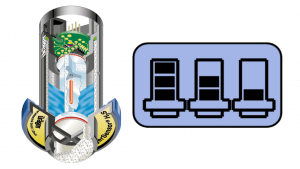Draeger Sensor Diagnostic Dongle
September 9, 2021A number of years ago, our engineering team was asked to help a company that was doing full-system calibration checks once a week on over 125 sensors around their facility. The maintenance team was fighting with the safety team, since the safety team wanted to add many more sensors, but the maintenance team was struggling with keeping up with doing full system checks once a week. As we dug deeper and deeper to try to understand what was going on, we realized that the company’s corporate safety team had mandated the weekly checks because their chosen gas sensor technology would “fall asleep” seemingly at random and not provide any protection. There was even a person who would walk around and use her own nose to sniff for gas leaks of toxic gases – we were horrified! By using the sensor technology that they had chosen, they were putting their people at risk and spending a lot of extra time and money maintaining a system that they couldn’t trust.
And these exact situations are why Draeger designed their higher level diagnostic capabilities with the Draeger Sensor Diagnostic Dongle, a chipset that can be added to certain Draeger transmitters to activate three key diagnostic functions for most Draeger e-chem sensors:

1. Predictive Maintenance Life Indicator: Think of this as a “Battery-Level” of expected sensor life. As shown in the picture, the transmitter display features an icon that shows the sensor in one of three states – “extensive life left”, “mid-life”, and “replace soon”. The chipset regularly tests the sensor during normal operation, as well as after each calibration, to determine how exhausted a sensor is. Various factors are calculated to determine the sensor’s exhaustion, with the two main ones being temperature exposure (max and average) as well as gas exposure (max and average). A single horizontal bar indicates that sensor failure is likely to occur soon.
2. Vitality: This is a calibration-related numerical data point that provides useful information for a calibration technician to know how well the sensor is responding – what the sensitivity of the sensor is to gas. Calculated using past and current sensitivity readings to the gas, as well as knowing the overall life-time usage of the sensor, a number between 0 to 100 is displayed. A new sensor typically displays between 95 to 100 (indicating strong sensitivity), whereas a sensor that is fairly old and has very weak sensitivity could display very low numbers. As the sensor ages and is exposed to various gases, the sensitivity will typically continue to drop, although it can sometimes get higher. If a reading of 25 or lower is seen, it would indicate that the sensor probably needs to be replaced soon, or at least bumped / calibrated far more often than typical.
3. 10 Minute Health Check: Every 10 minutes, the sensor is electrical stimulated to observe whether it is functioning and healthy. If any error is detected, a sensor fault is given to warn that something is wrong, and the sensor needs to be checked or replaced.
Using Draeger’s unique sensor diagnostic chipset can definitely help to know when sensors should actually be replaced, as well as providing ample warning for imminent sensor failure!
